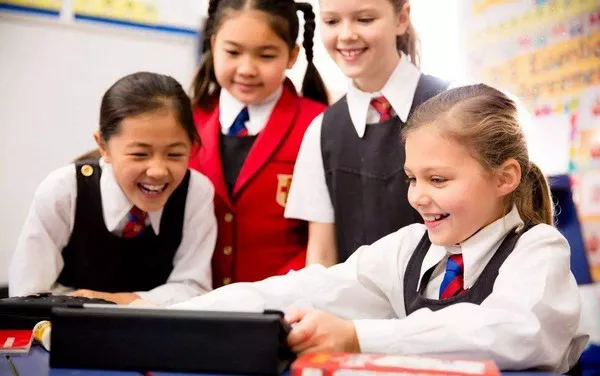The Myers-Briggs Type Indicator (MBTI) is a widely-used tool for understanding personality preferences and tendencies. Each of the 16 MBTI personality types is characterized by unique cognitive processes, communication styles, and learning preferences. While learning speed can vary based on individual factors beyond MBTI, such as motivation, prior knowledge, and environmental influences, certain personality types may exhibit tendencies towards accelerated learning in specific contexts. In this article, we delve into the interplay between MBTI personality types and learning styles, exploring which MBTI type might learn fastest in various learning environments and situations.
Understanding MBTI Personality Types
The MBTI framework categorizes individuals into 16 distinct personality types based on four dichotomies: Extraversion (E) vs. Introversion (I), Sensing (S) vs. Intuition (N), Thinking (T) vs. Feeling (F), and Judging (J) vs. Perceiving (P). These preferences combine to form unique personality profiles, each with its own strengths, weaknesses, and learning tendencies. Understanding the nuances of each MBTI type can provide insights into how individuals approach and engage with the learning process.
Exploring Learning Styles Across MBTI Types
While there is no one-size-fits-all approach to learning, certain MBTI types may demonstrate tendencies towards accelerated learning in specific domains or contexts. For example, individuals with a preference for Sensing (S) may excel in hands-on, practical learning environments where they can engage with concrete, tangible information. On the other hand, those with a preference for Intuition (N) may thrive in more abstract, conceptual learning settings that allow for creativity and exploration. By aligning instructional methods and learning experiences with the preferences of each MBTI type, educators and learners can optimize learning outcomes and engagement.
Analyzing Cognitive Processes and Learning Strategies
The cognitive processes associated with each MBTI type can also influence learning speed and efficiency. For instance, individuals with a preference for Thinking (T) may excel in analytical tasks that require logical reasoning and problem-solving skills. They may prefer structured, systematic approaches to learning, focusing on understanding underlying principles and patterns. In contrast, those with a preference for Feeling (F) may prioritize empathy, collaboration, and emotional resonance in their learning experiences. They may benefit from opportunities to connect with others, share perspectives, and explore the human aspect of learning topics.
Identifying Motivational Drivers and Incentives
Motivation plays a crucial role in learning, influencing individuals’ willingness to engage with new information, persist in challenging tasks, and apply acquired knowledge. Each MBTI type may be motivated by different factors, ranging from personal achievement and recognition to social connection and meaningful impact. For example, individuals with a preference for Extraversion (E) may thrive in collaborative learning environments where they can interact with peers, share ideas, and receive immediate feedback. In contrast, those with a preference for Introversion (I) may prefer solitary or small-group learning settings that allow for reflection, depth, and focused concentration.
Leveraging Learning Preferences and Modalities
Understanding the preferred learning modalities of each MBTI type can inform instructional design and delivery methods. For instance, individuals with a preference for Sensing (S) may prefer learning through concrete examples, hands-on activities, and step-by-step instructions. They may benefit from visual aids, demonstrations, and real-world applications of learning concepts. Conversely, those with a preference for Intuition (N) may gravitate towards abstract, theoretical frameworks, and enjoy opportunities for brainstorming, pattern recognition, and creative problem-solving. By incorporating diverse learning modalities and catering to the preferences of different MBTI types, educators can create inclusive and effective learning environments.
Embracing Diversity and Individuality in Learning
It’s essential to recognize that learning speed and preferences are highly individual and multifaceted, transcending simplistic categorizations based on MBTI types. While certain personality types may exhibit tendencies towards accelerated learning in specific contexts, there is no inherently superior or inferior learning style. Embracing diversity and honoring the unique strengths and preferences of each learner fosters a culture of inclusivity, respect, and empowerment in educational settings. By providing opportunities for self-discovery, reflection, and personalized learning experiences, educators can nurture the holistic development of learners across all MBTI types.
Adapting Instructional Strategies and Assessments
Flexibility and adaptability are key principles in designing instructional strategies and assessments that accommodate the diverse needs and preferences of learners. Rather than adhering rigidly to one-size-fits-all approaches, educators can adopt a differentiated instruction framework that tailors learning experiences to the individual characteristics and learning styles of each MBTI type. This may involve offering multiple pathways to learning, incorporating alternative assessment methods, and providing opportunities for student choice and autonomy. By embracing a learner-centered approach and leveraging the insights provided by MBTI, educators can create dynamic and engaging learning experiences that maximize student potential and foster lifelong learning habits.
Fostering Growth Mindset and Continuous Improvement
Regardless of MBTI type, cultivating a growth mindset is essential for promoting resilience, adaptability, and continuous improvement in learning. Encourage learners to embrace challenges as opportunities for growth, to persevere in the face of setbacks, and to view mistakes as valuable learning experiences. By fostering a culture of curiosity, experimentation, and self-reflection, educators can empower learners to take ownership of their learning journey and develop the skills and mindset necessary for success in an ever-evolving world. Ultimately, the journey of learning is not about speed or destination but about the transformative process of discovery, exploration, and self-discovery.
Conclusion
While certain MBTI types may exhibit tendencies towards accelerated learning in specific contexts, learning speed is a multifaceted phenomenon influenced by individual factors, motivations, and experiences. By understanding the cognitive processes, learning preferences, and motivational drivers associated with each MBTI type, educators and learners can optimize learning outcomes and engagement. Embracing diversity, adapting instructional strategies, and fostering a growth mindset are essential for creating inclusive and effective learning environments that empower learners across all MBTI types to thrive and succeed.
Related topics:





























